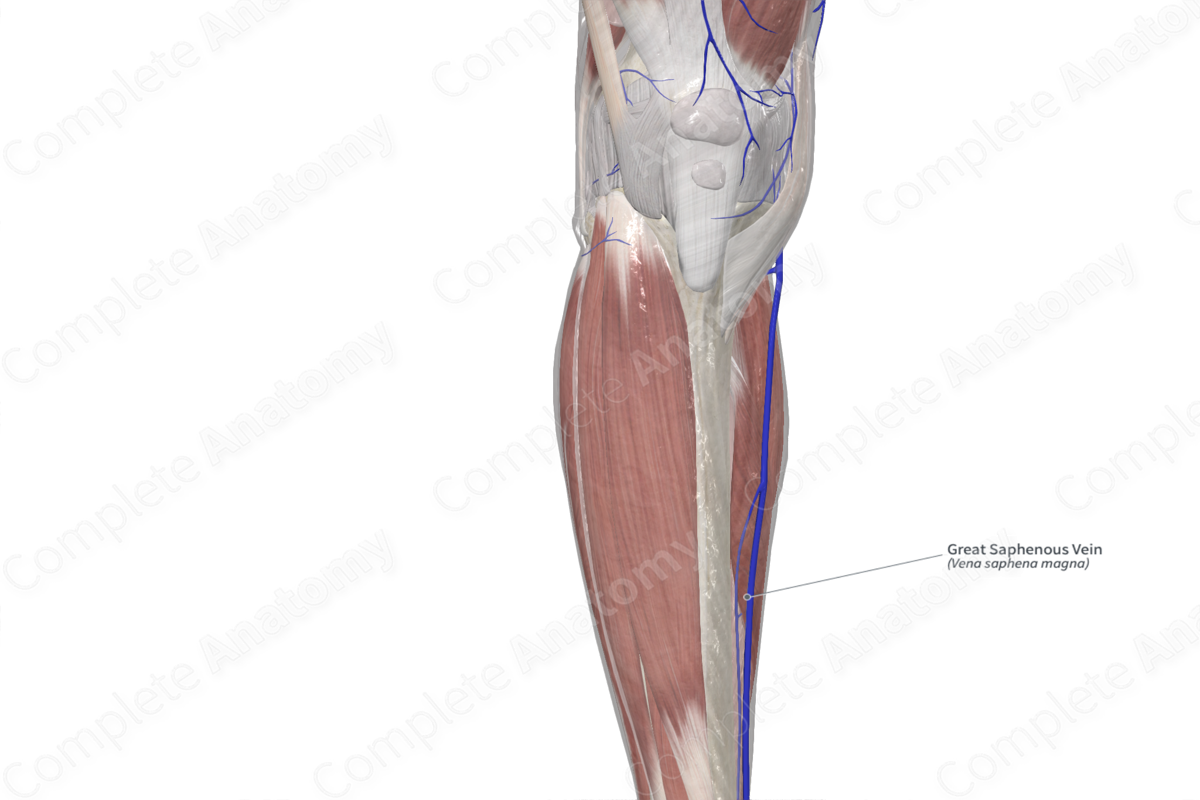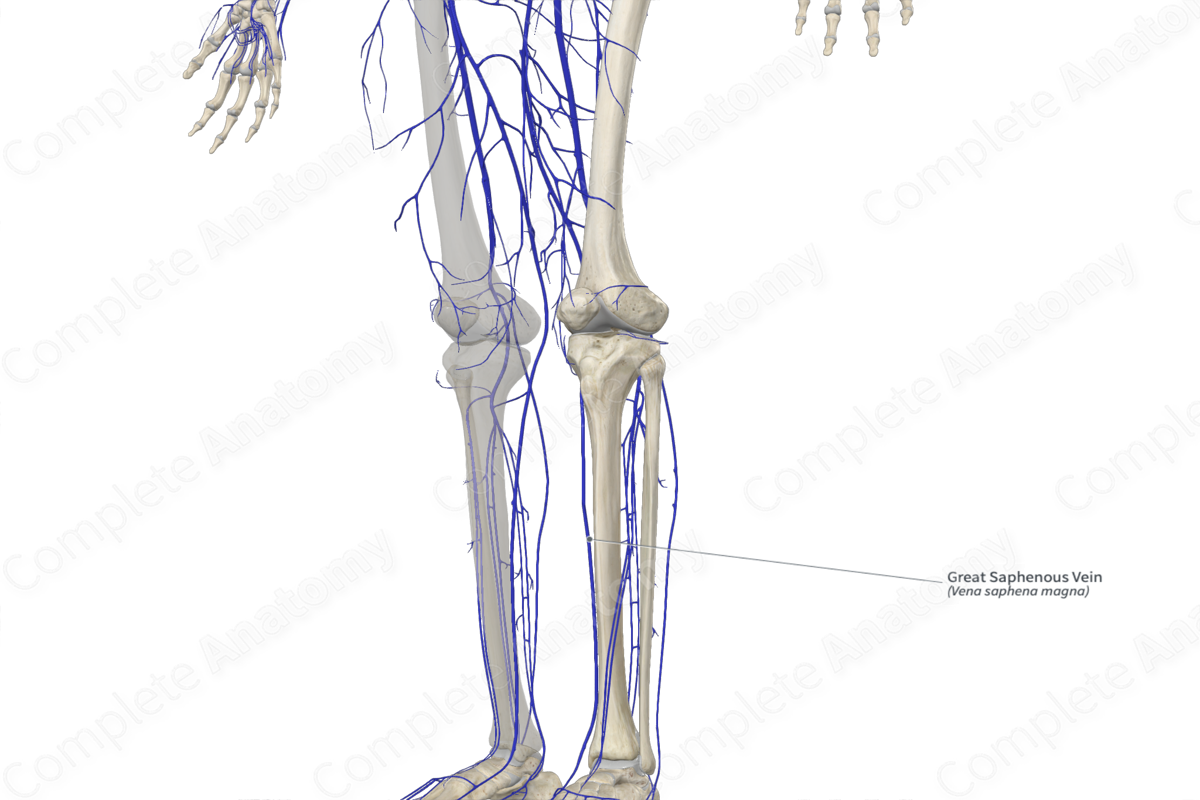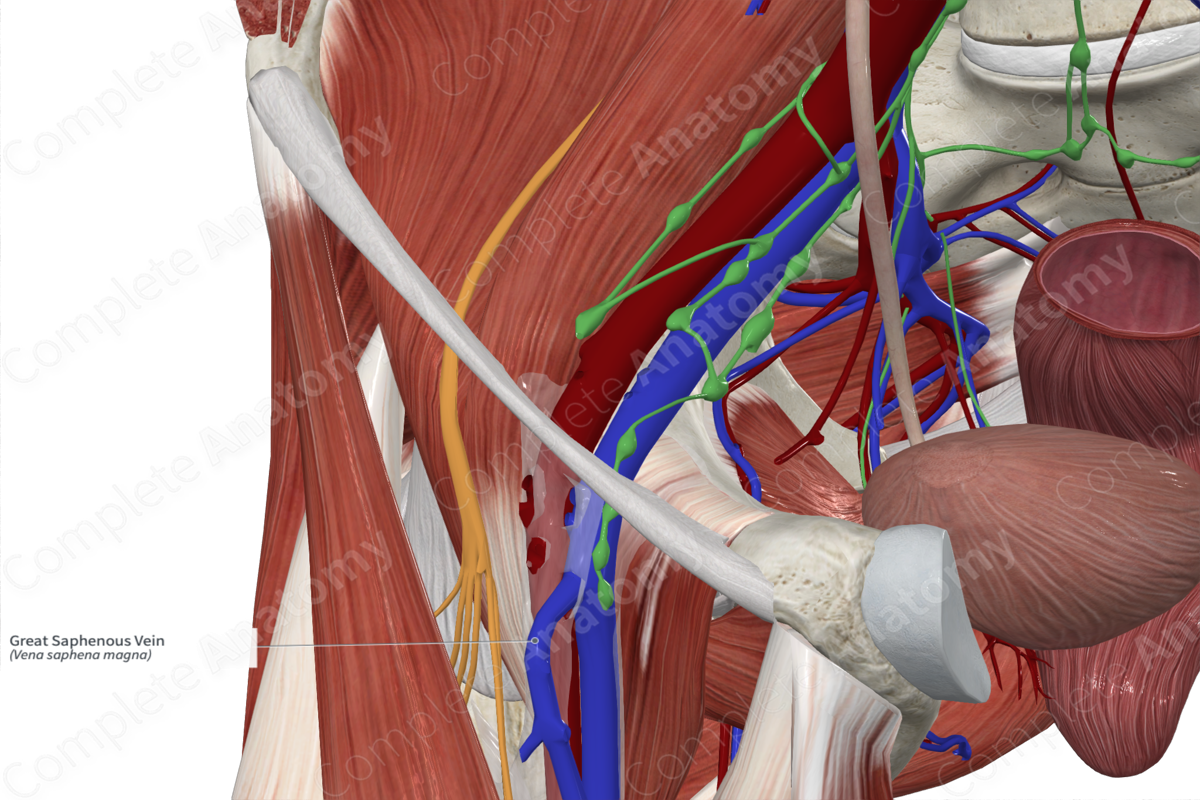
Quick Facts
Origin: Union of the dorsal venous arch of the foot and the dorsal veins of the great toe.
Course: Takes a long course from the foot to the proximal thigh to drain into the femoral vein.
Tributaries: Perforating, accessory saphenous, external pudendal, and posterior arch veins.
Drainage: Foot and leg.
Related parts of the anatomy
Origin
The great saphenous vein originates in the foot from the union of the dorsal venous arch of the foot and the dorsal veins of the great toe.
Course
The great saphenous vein is the longest vein in the body, as it travels superficially through the entire length of the lower limb. It ascends from the foot, anterior to the medial malleolus, and travels in an anteroposterior direction along the medial surface of the tibia to the knee joint. It runs posterior to the medial condyle of the femur and the medial border of the patella. From there it runs along the medial aspect of the superficial thigh to drain into the femoral vein, at the saphenous opening in the fascia latae.
Tributaries
Tributaries of the great saphenous vein include perforating veins from the deep veins of the lower limb, accessory saphenous, external pudendal, and the posterior arch veins. Additionally, the medial marginal, superficial epigastric, superficial circumflex iliac may drain into the great saphenous vein.
Structures Drained
The many tributaries of the great saphenous vein drain the foot, leg, thigh, inguinal region, and lower abdominal wall.
List of Clinical Correlates
-Varicose Veins
-Thrombophlebitis
Learn more about this topic from other Elsevier products
Great Saphenous Vein

The term superficial accessory great saphenous vein is considered to be any venous segment ascending parallel to the GSV and located just superficial to the saphenous fascia, both in the leg and in the thigh.




